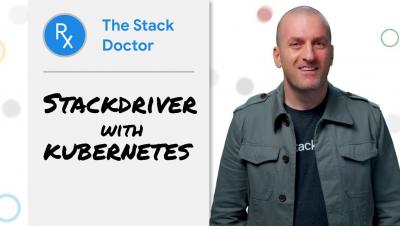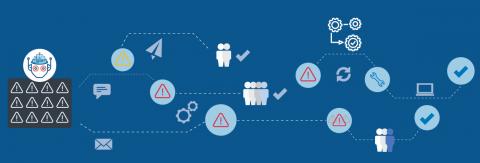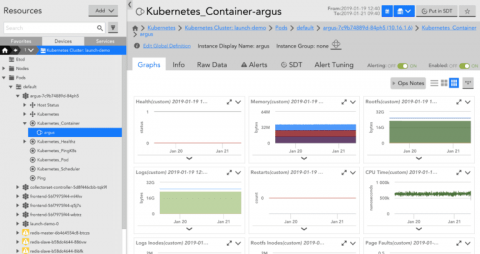Operations | Monitoring | ITSM | DevOps | Cloud
Monitoring
The latest News and Information on Monitoring for Websites, Applications, APIs, Infrastructure, and other technologies.
OpsRamp Webinar: 2019 Performance Monitoring and Management Trends & Insights
What is DNS? Some basic concepts
What is DNS? DNS is the Domain Name System, or the hierarchical system of nomenclature that orders the names of members who connect to IP networks, such as the Internet. In this article we will briefly learn what DNS is, how it works, what it is used for and some of its advantages and disadvantages. What is DNS? Shall we begin?
Reduce Incident Downtime and Fix Outages Sooner with Policy-Based Alert Escalation Management
Proactive Incident Analysis, Diagnosis, and Resolution with Service-Centric AIOps. Alerts define the state of an infrastructure resource, application, or any other IP discoverable device. Organizations take action on alerts based on business impact and priority and ensure that IT service performance meets the required standards for availability, usability, and security.
Key ECS metrics to monitor
Amazon Elastic Container Service (ECS) is an orchestration service for Docker containers running within the Amazon Web Services (AWS) cloud. You can declare the components of a container-based infrastructure, and ECS will deploy, maintain, and remove those components automatically. The resulting ECS cluster lends itself to a microservice architecture where containers are scaled and scheduled based on need.
Tools for ECS monitoring
In Part 1, we introduced a number of key metrics that you can use for ECS monitoring. Monitoring ECS involves paying attention to two levels of abstraction: the status of your services, tasks, and containers, as well as the resource use from the underlying compute and storage infrastructure, monitored per EC2 host or Docker container. In this post, we’ll survey some techniques you can use to monitor both levels of your ECS deployment.
Monitoring ECS with Datadog
As we explained in Part 1, it’s important to monitor task status and resource use at the level of ECS constructs like clusters and services, while also paying attention to what’s taking place within each host or container. In this post, we’ll show you how Datadog can help you: Automatically collect metrics from every layer of your ECS deployment, Track data from your ECS cluster, plus its hosts and running services in dashboards, and more.
How to Monitor GKE with LogicMonitor
Google Kubernetes Engine (GKE) is a managed Kubernetes service that makes it possible to run Kubernetes clusters without managing the underlying infrastructure. With GKE, DevOps teams can scale and deploy applications faster with Kubernetes, while spending less time on cluster maintenance and configuration. Obtaining enough insight into GKE is key to proactively preventing downtime and maximizing application performance.
How HTTP Toolkit Debugs Netlify Errors with Sentry
Netlify functions are a quick, easy and powerful tool, but like most serverless platforms, they can be even more difficult to debug and monitor than traditional server applications. It’s a hard environment to precisely recreate locally, there’s no machine you can SSH into in a pinch, and no built-in error notifications. Your code is going to break eventually, and you need the tools to fix it.
NiCE VMware MP 5.00 Released
Get the complete picture of the health and performance of your business critical VMware environments. The NiCE VMware Management Pack delivers first-rate monitoring for your business critical, highly dynamical virtualized environments. Even overcoming the specter of global VMware service outages is now viable. Leverage your existing investment, reduce costs, save time and build efficiencies that will last beyond your expectations.











